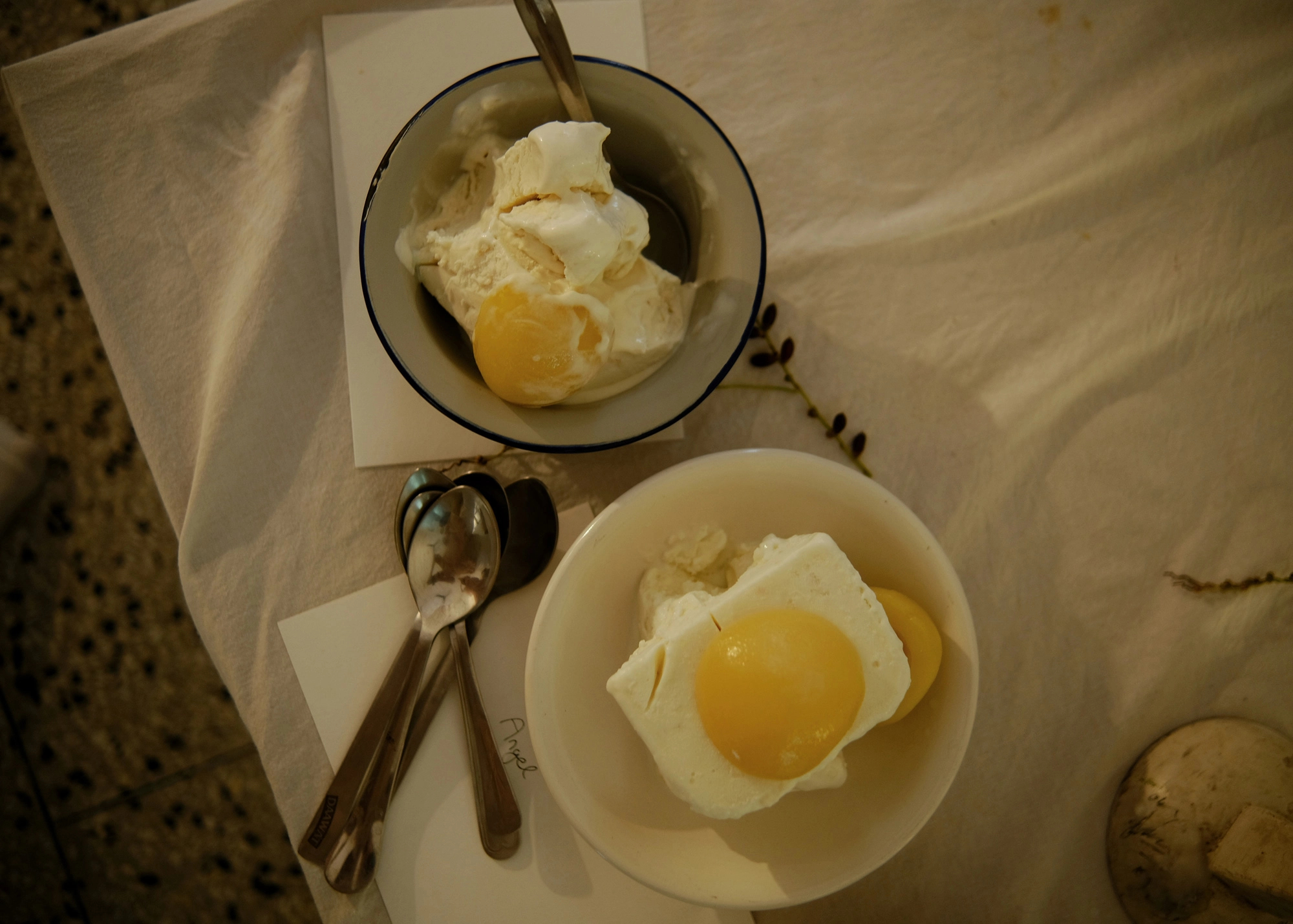“For Me, Food Is A Medium For Creating Life Bonds In A Personal Space”: Daksha Salam
Eating together is the pivotal activity around which Imphal-born Daksha Salam’s elaborate gatherings operate. As he prepares to host an exclusive luncheon for Verve, he talks about his early influences and how he’s demystifying North-Eastern cuisine
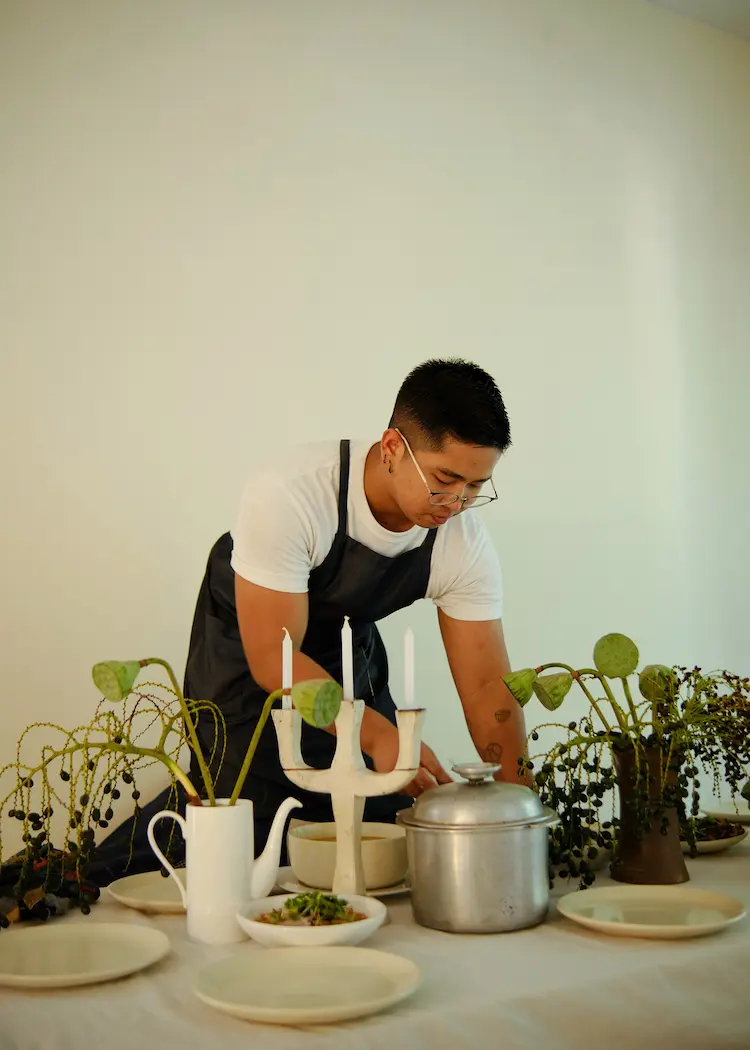
A dinner party or a luncheon is a social event, apart from being a culinary-centric one. It’s an invitation to witness a performance, albeit one that is more or less personal. It is situated at a private site — a home, where the host invites their guests into. It’s the ultimate gesture in many ways — an opening of a window or an interstice through which one is vicariously inducted into the host’s world — and I feel it deeply as I move towards 40. Being served food acquires a certain value as one grows older. Taste buds evolve and there is a gratitude attached to it. Having fended for ourselves by now, in the kitchen as well as the real world, we know the value of a meal cooked with care. Personally for me, the culture of hosting peers or attending parties where the food is cooked at home and a table is laid out punctiliously is then almost a coming-of-age ritual that is synonymous to “adulting” in a way. Overall, in the spectrum of socialising, it could be said that they signify a specific transition in attitudes and choices from twenties to thirties, where there is a gravitation towards more meaningful gatherings.
Imphal-born Daksha Salam too prefers intimate settings over “going out drinking or clubbing”, especially when it comes to meeting new people in a new city. Salam has a penchant for throwing meticulously planned luncheons and dinner parties where the only criterion is that guests are open to a menu “that is new to them”. “I love inviting people to a space that I have created — it means so much more and you can only do that when you are in a space where you feel comfortable allowing other people into your space. I don’t think I would have been able to do that at a younger age and it only comes with starting to understand yourself better. Hosting dinners and lunches is synonymous to coming into one’s own in a way. In fact, it’s something I used to fantasise about while growing up as a young queer kid in the closet. The idea of having my own space, a safe space that I can share with my loved ones, was deeply appealing.”
For 28-year-old Salam, who was employed by fashion label Raw Mango as a textile designer and stylist in Delhi before recently relocating to Bengaluru to work with artisanal cheese makers Nari & Kāge, the process is detailed. It ranges from curating the menu, sourcing, prepping and cooking to inviting guests, setting the table and creating the mood. And Salam feeds off his role as the lone host; he would much rather do it all by himself, says the self-proclaimed homebody. “I’m very specific about the prep and presentation…I don’t want anyone to step into the kitchen when I’m cooking. It’s my space.” It’s clear that it is one of the few ways he feels comfortable expressing love — a product of having grown up in a household where affection is not rambunctiously expressed and cooking is an ungendered family affair. For him, it’s a familiar territory. With whom we eat defines who we are. The meditative and primitively human act of cooking, feeding and eating has been seen to dissolve divides, whether these are generational, geographical or gender-centric. For Salam, food is sacrosanct as a medium — a common ground that enables him to freely assert his identity, build community and find his centre.
Salam takes us through the dishes that he cooked for the luncheon that he recently hosted for Verve….
THE MENU
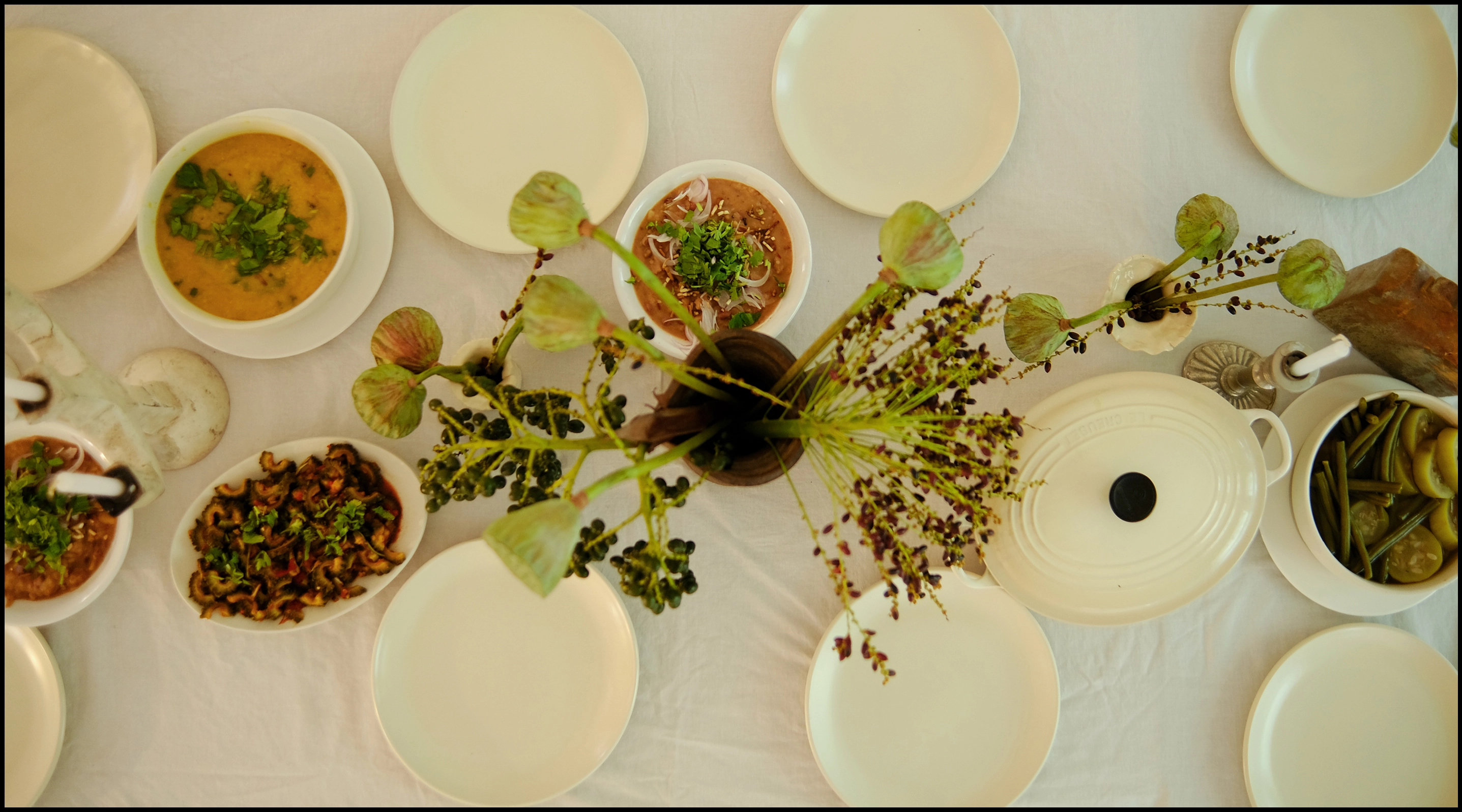
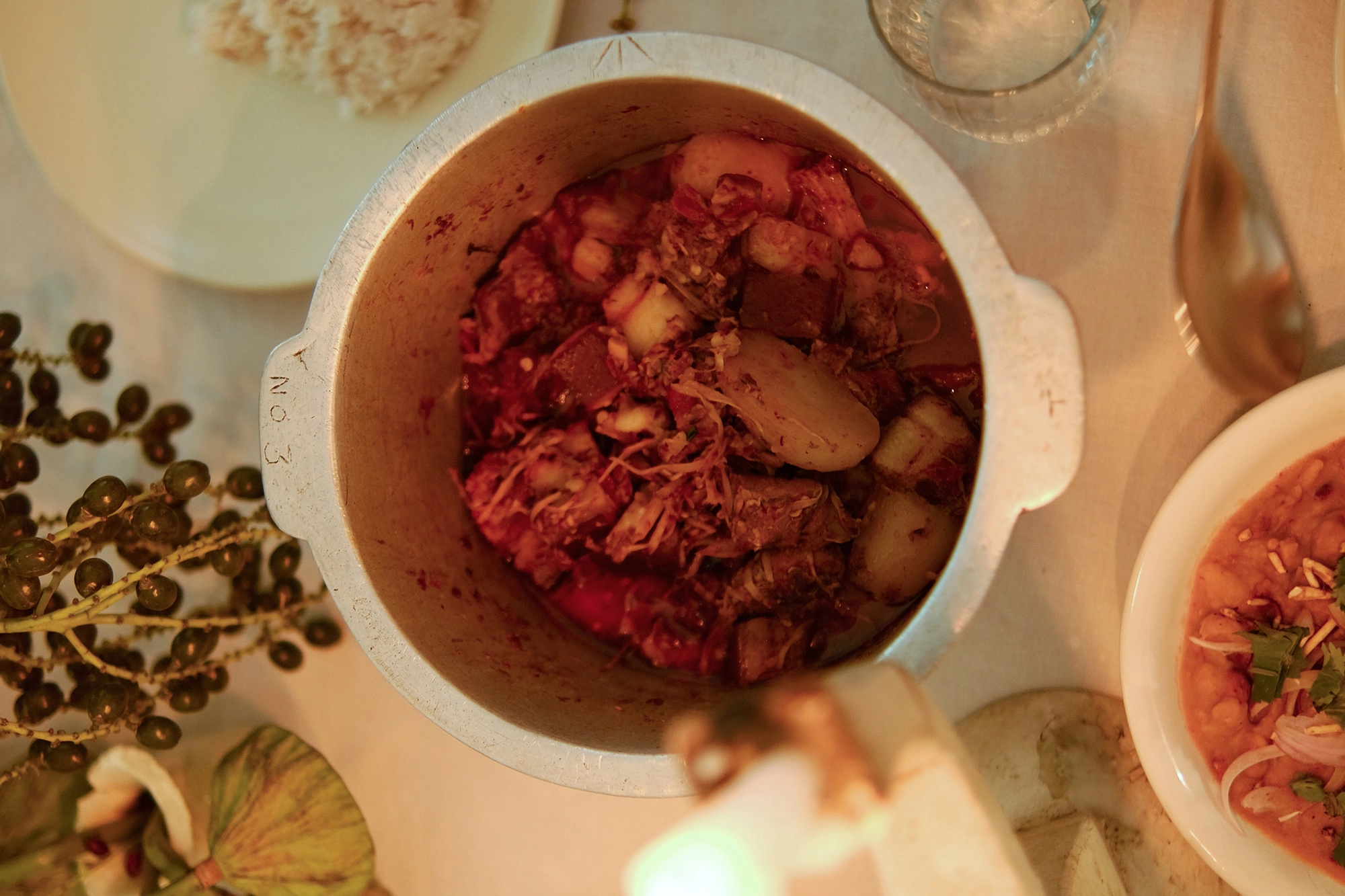
Smoked Pork with Akhuni
“I learnt this recipe from my aunt who in turn picked it up from her Naga roommates during her college days in Chandigarh. The recipe has gone through several changes over the decades. But one thing remains the same, which is the akhuni (fermented soybeans) part of it. Fermented soybeans are a very essential ingredient in a North-Eastern household. Each state and tribe has its own special way of fermenting and consuming soybean. They are best paired with lots of chilli and salt. The dish is very simply seasoned with chilli, ginger, garlic and tomato. Crush the garlic and ginger separately. Cut the tomato into thick slices. Soak the bamboo shoots in warm water and rinse. Wash the pork and put it in a pressure cooker with adequate water.
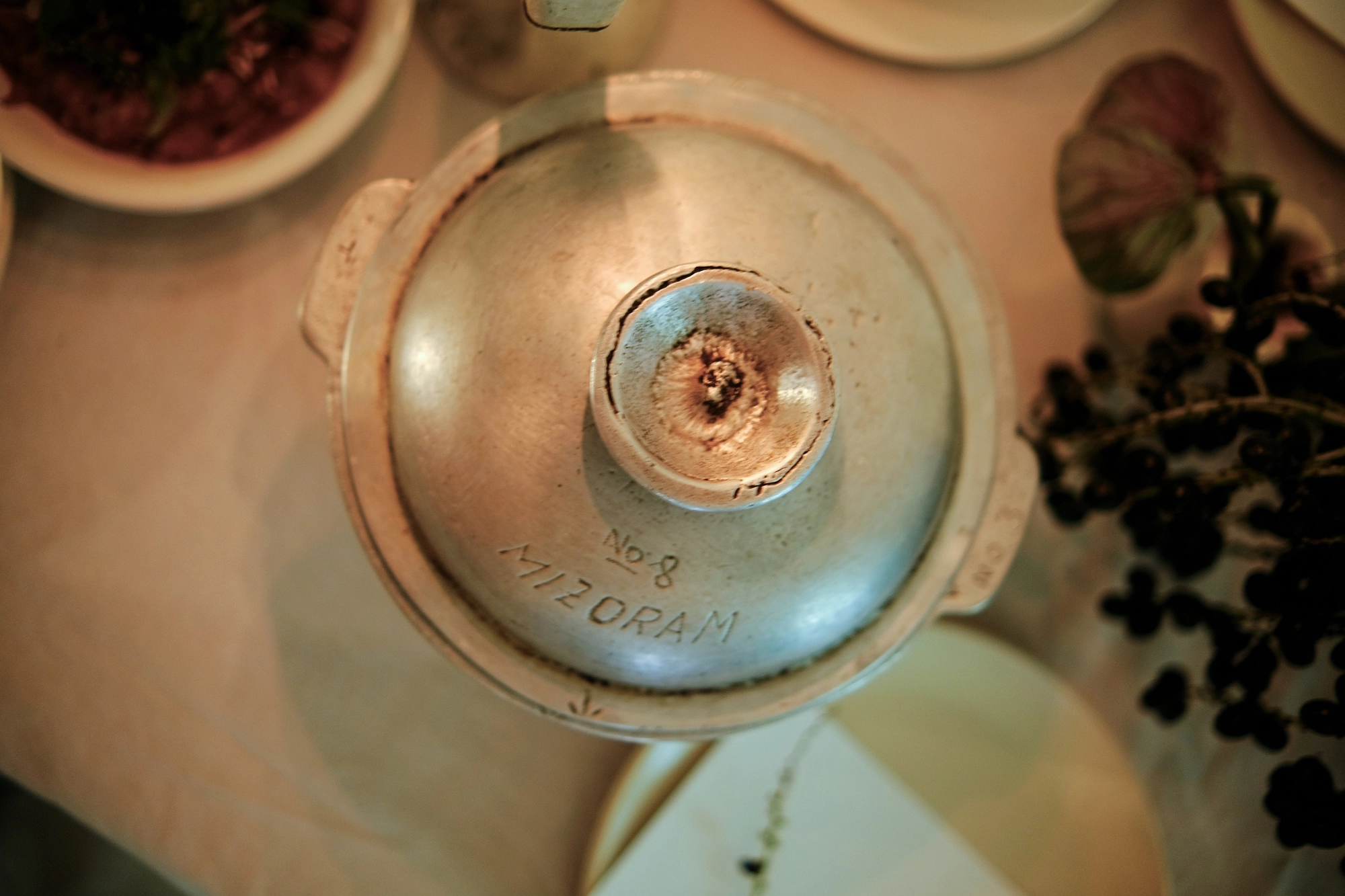
Keep the lid off and remove the broth scum that floats. As the water starts boiling, add two teaspoons of salt. You can now remove the water or let it boil off. Once the pork changes colour and becomes slightly golden, add the tomato slices, chilli powder and whole chilli. Pour some water if it gets dried out. When the tomato and chilli blend in, add the fermented soybeans (akhuni) and stir. Let it simmer. Keep adding water to adjust the dryness. After 15-20 minutes of simmering, add the crushed garlic and ginger and simmer again for another 10 mins. Once the pork starts to release oil, you can add about a cup of water and the bamboo shoot. Make sure the pieces of pork are submerged slightly under water. Put the pressure cooker lid on and cook for 6-7 whistles. Carefully open the cooker once it cools. Use a fork to check if the skin is cooked well. Add salt to taste.”
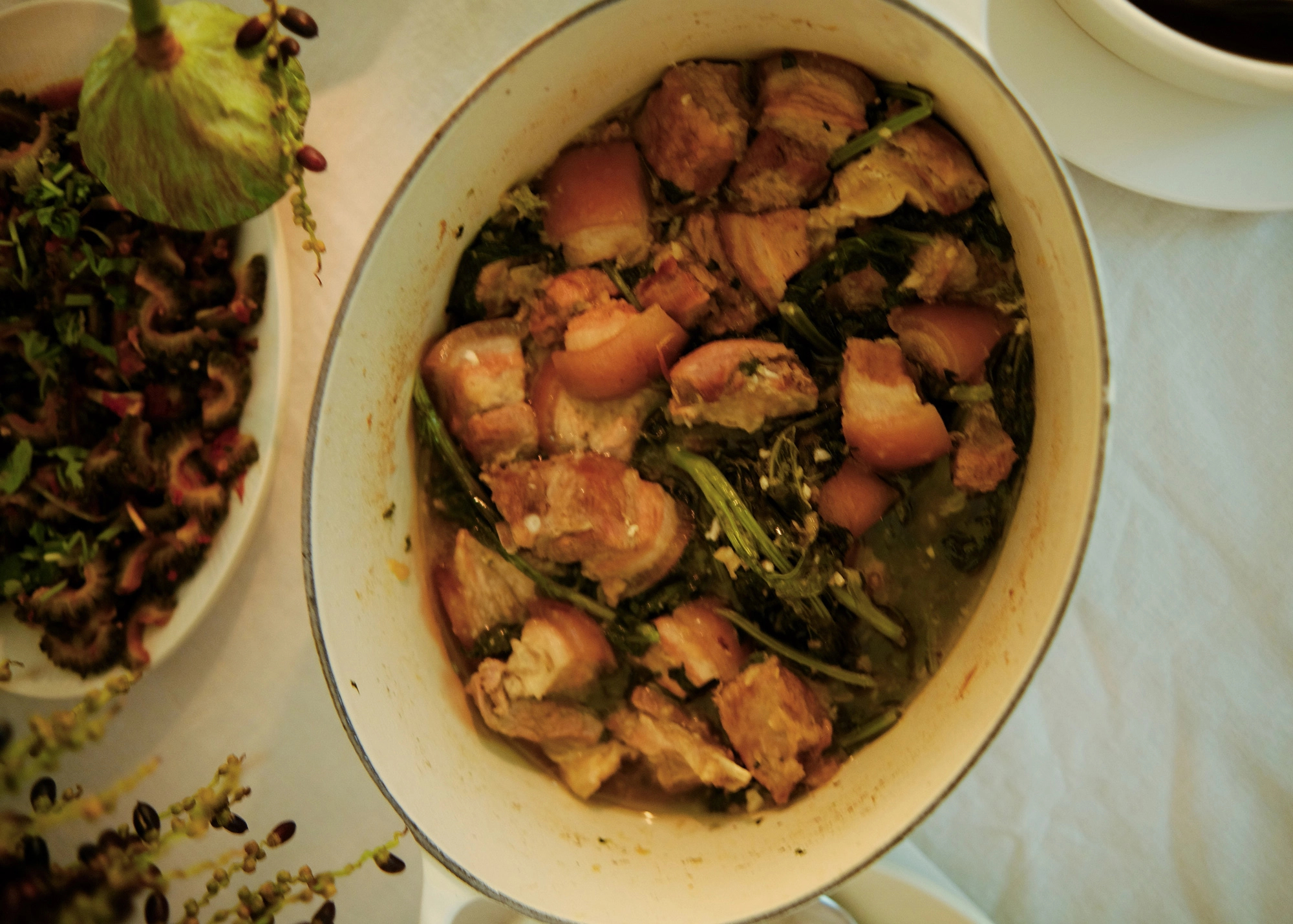
Fresh Pork with Lai Xaak
“This is a dish that my father had developed at home for our Sunday comfort meals. Lai xaak is the Assamese word for mustard greens. My father who hailed from the Meitei community in Assam would perfectly combine Assamese ingredients with Manipuri cooking ethics. The lai xaak pork is one such dish. It is mostly cooked during the winters. The meat is braised in a simple concoction of ginger, garlic and chilli, and the flavour is amped up within the final 10 minutes with a handful of fresh mustard greens. Just this stew and a bowl of steaming hot rice make for the perfect respite on a cold winter Sunday.”
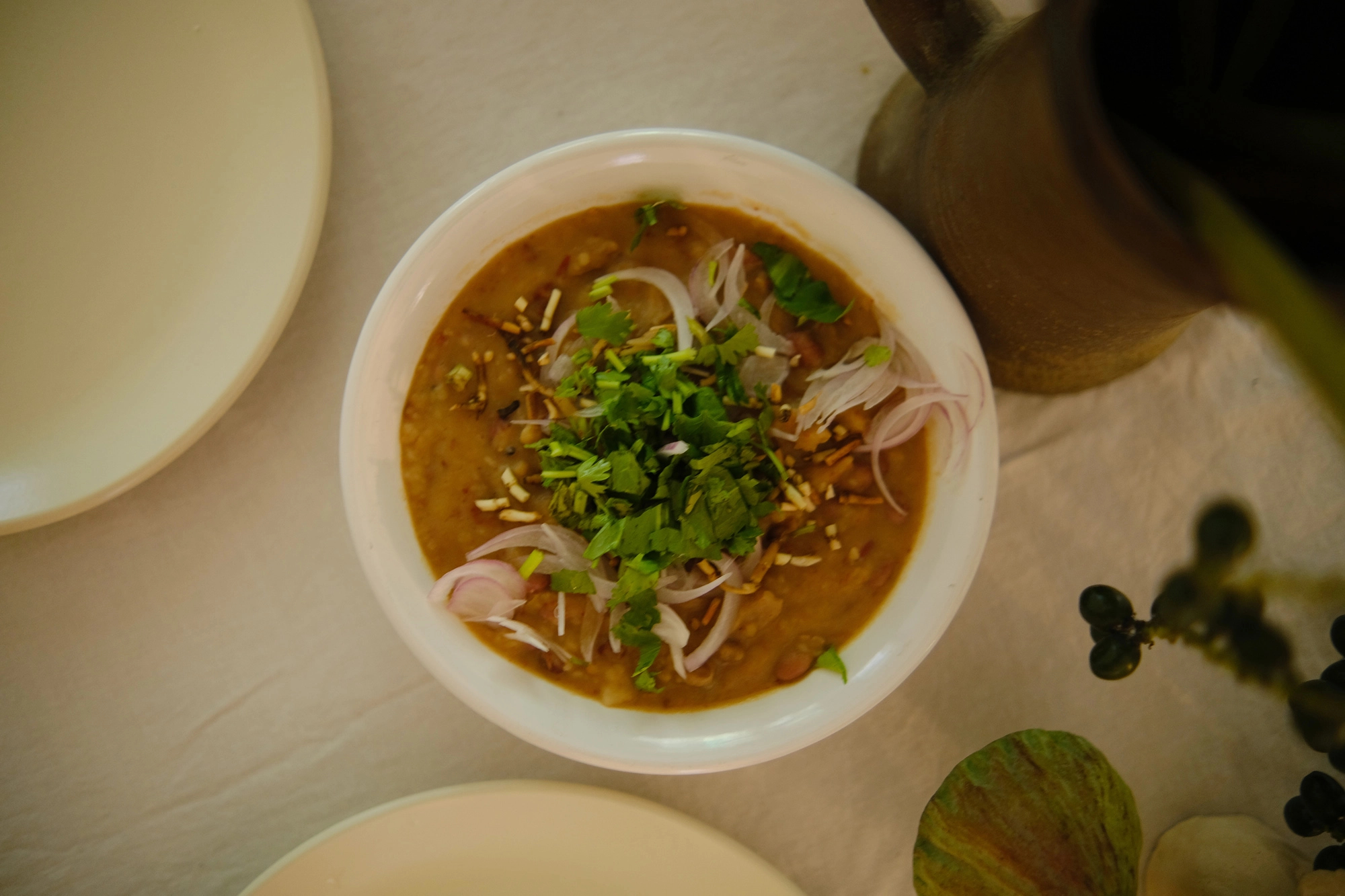
Bamboo Shoot Eromba
“Not every dish back home was lavish or meat-based. There were days in the week where a quick fix was needed to feed the entire family. One such dish that would satiate the entire family instantly was eromba. Pronounced “ee-rom-ba”, it is prepared with dried and fermented fish — known locally as ngari in Manipuri; “nga” means fish — and seasonal veggies that differ from family to family. The fish is first sun-dried and then fermented.”
“The other important ingredient here is the chilli. The combination of the chilli and the umami of the fermented fish coming together with wholesome seasonal vegetables — in this case, mashed potatoes — and a bowl of warm rice is uniquely pleasing.”
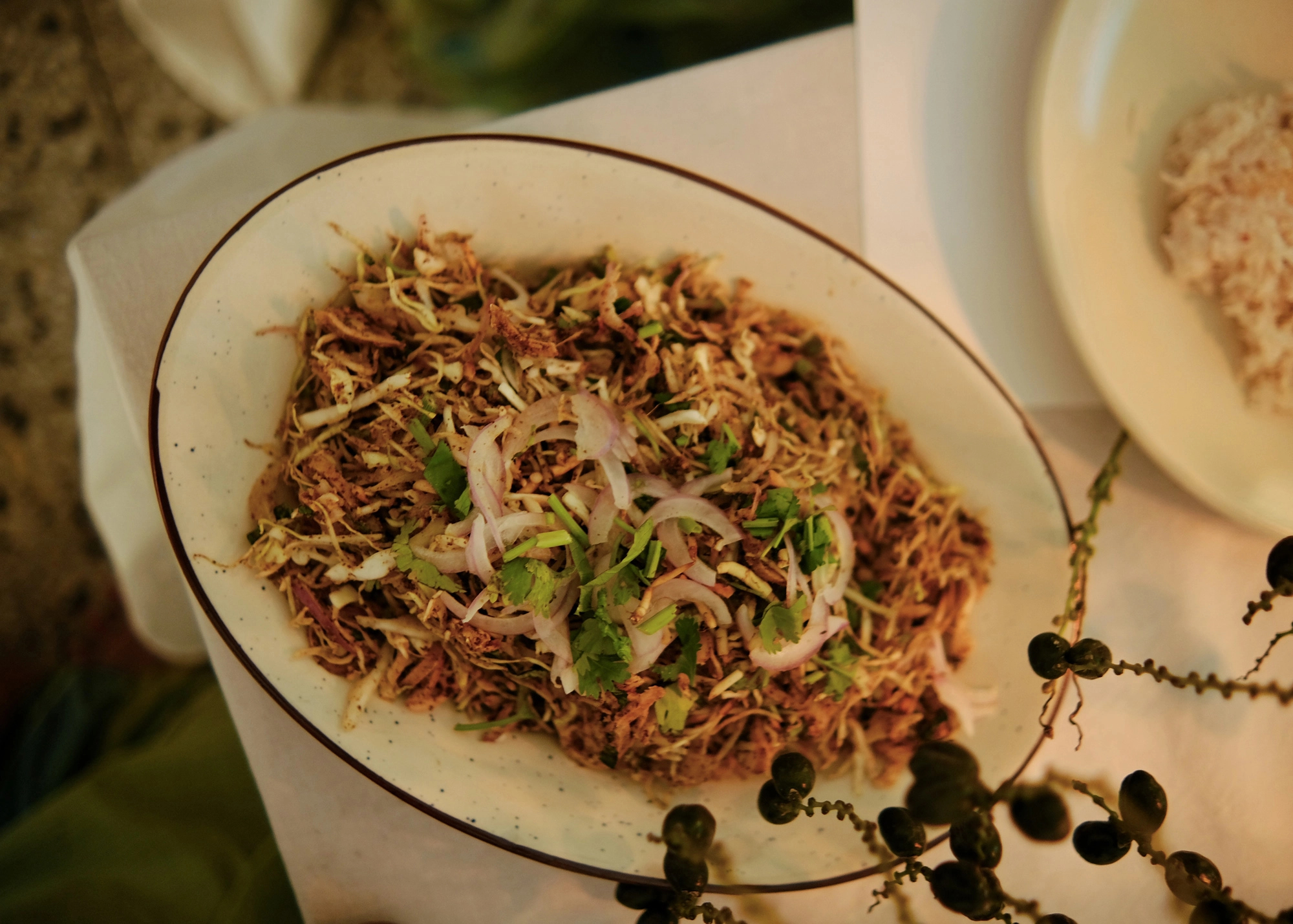
Singju
“This is a fresh spicy vegetable salad with thinly sliced cabbage, lotus and chameleon root, local fresh herbs, cilantro, roasted gram flour, roasted perilla seeds, chilli powder and salt. I remember my aunts eating it as they gossiped during tea time! It was almost like a rite of passage for us to consume a spicy singju with tea while we caught up with our friends.”
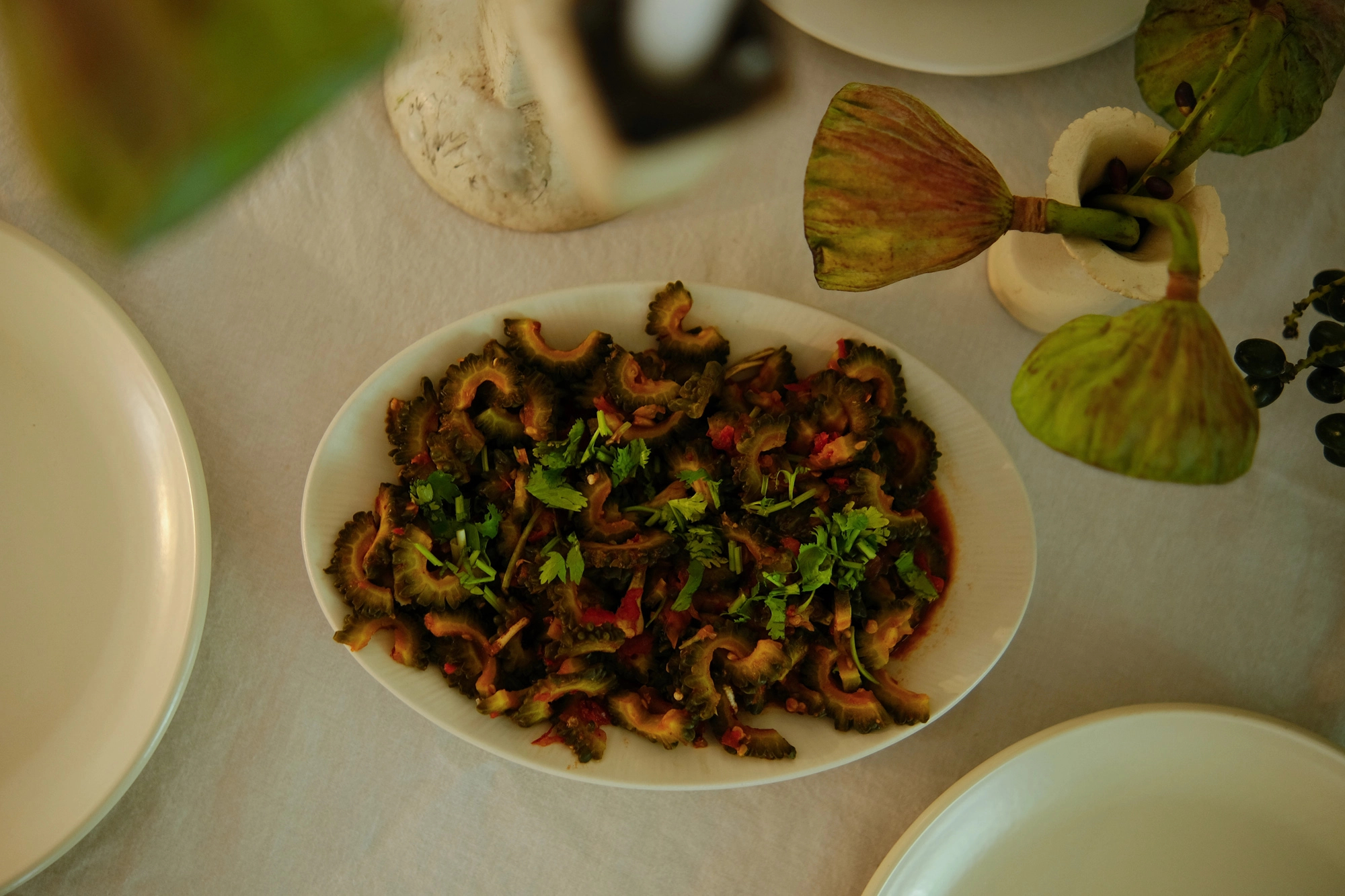
Karot Akhaba Ametpa
“Another dish that I was eager to prepare, ametpa is a spicy chutney in my mother tongue, Meitei. Ametpa is as simple as it gets — in this case, king chilli (known as u-morok in Manipur and bhut jolokia in Assam) is mashed with roasted fermented fish and bitter gourd (karot akhaba), with salt thrown in. It’s almost like the glue that brings the meal together. The bitterness from the gourd helps to mediate the spice and give a more rounded taste.”
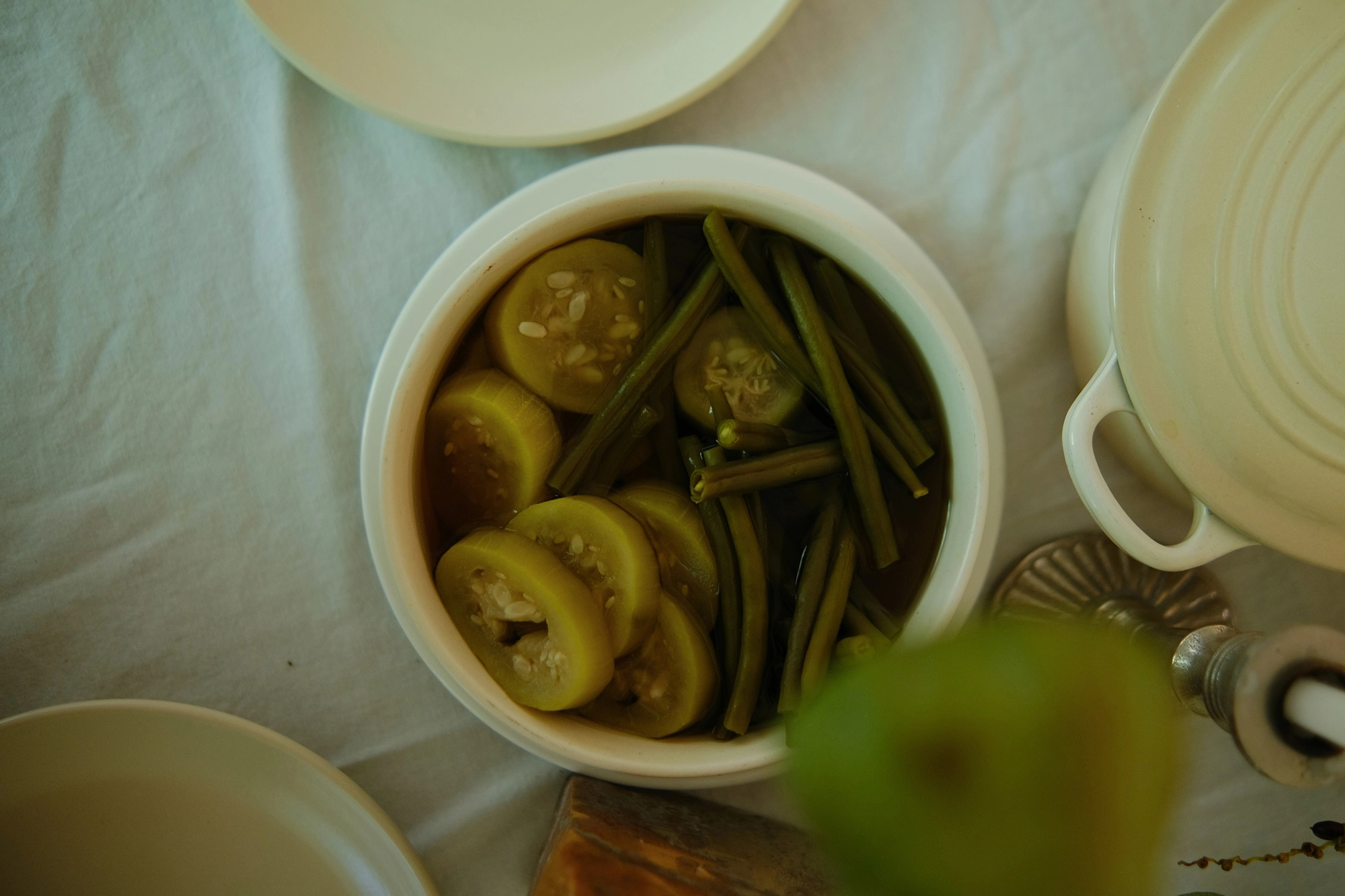
Champhoot
“It is a common accompaniment in Manipuri households. Any seasonal vegetable — I used beans and bottle gourd — is boiled or pressure-cooked with water or water and sugar. I prefer to go with sugar as it helps balance the overall heat of the other chilli-based dishes. The boiled vegetables also help cut the overall fattiness of the meat dishes.”
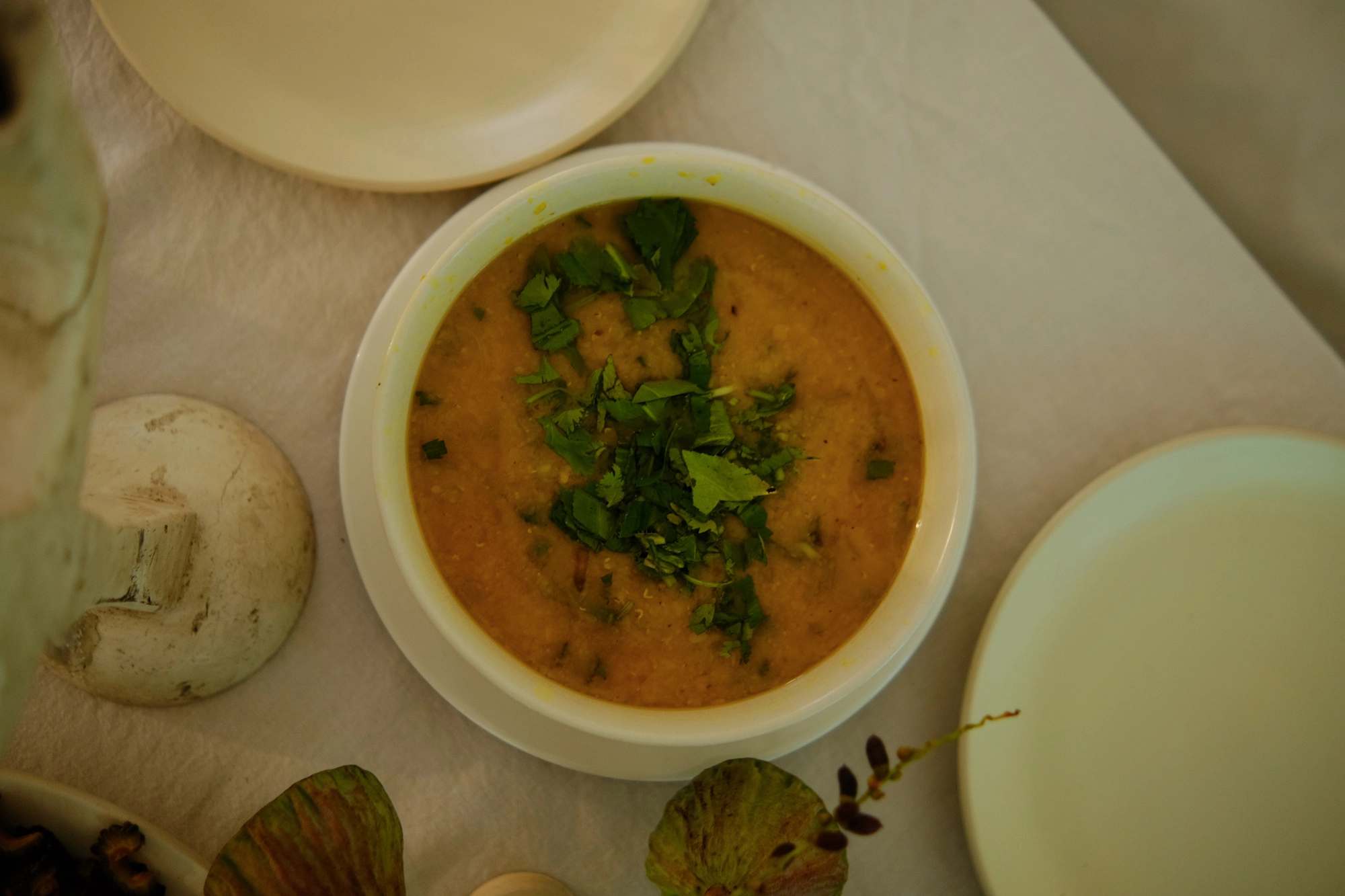
Dal
“It is a very simple yet quintessential element of the menu. It adds that extra earthiness to the palate. The dal we grew up eating is very toned down. None of the tadka, ghee and masala here! It’s a very simple dish that uses masoor dal, mustard oil, onion, turmeric and salt. Garnish with coriander leaves. That’s enough to create a dal that is so wholesome. It complements the entire meal.”
